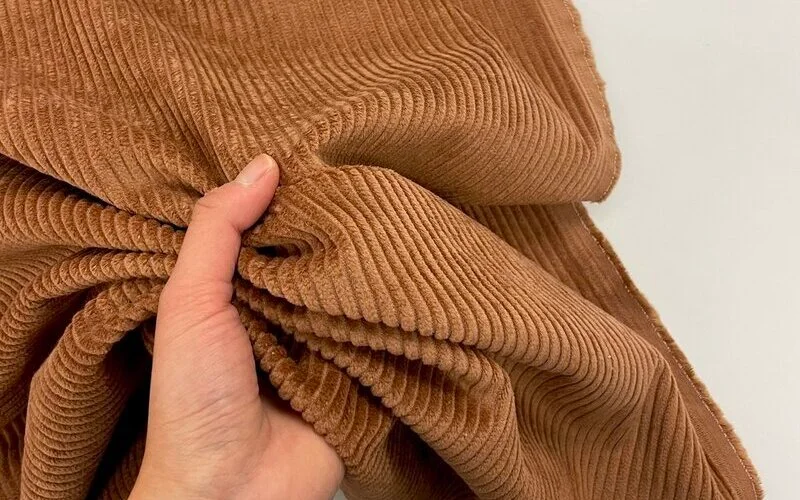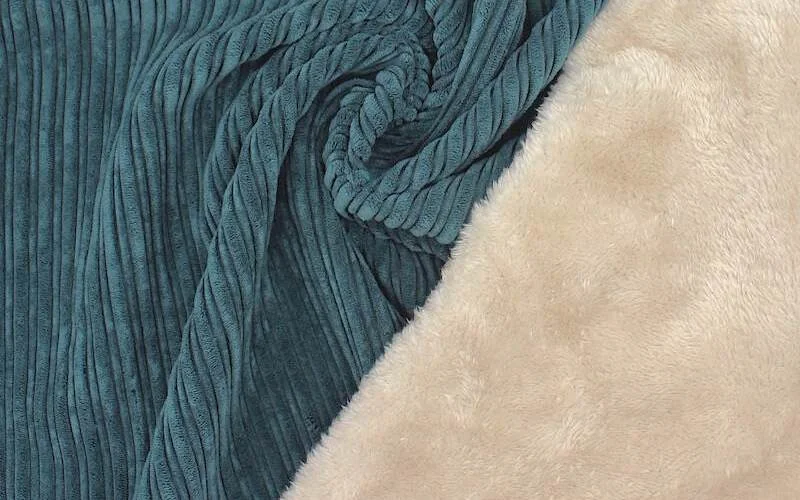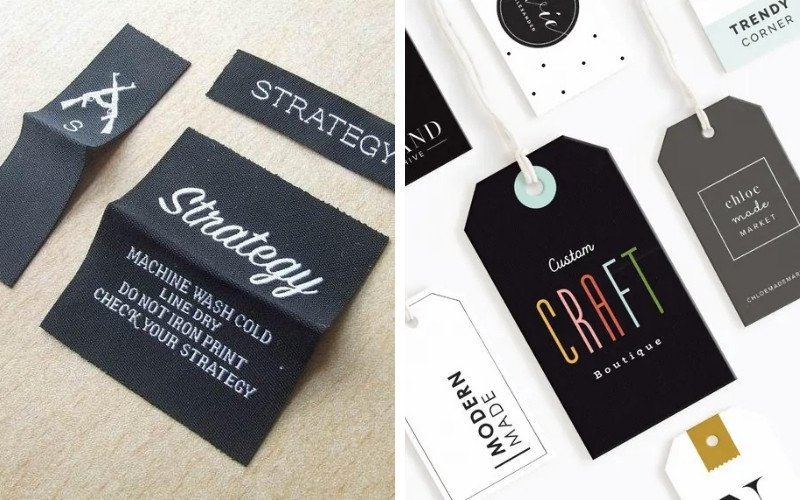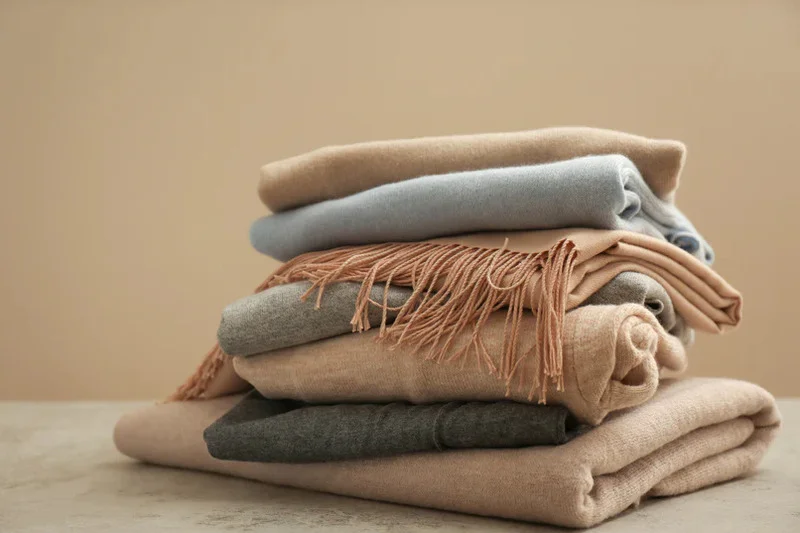What is Pile Fabric: Types, Uses And How It’s Made
Pile fabric is a unique textile with a raised surface, offering diverse textures and uses. You might have touched or worn products made from it without even knowing its special name! Understanding its types—like soft velvet, ribbed corduroy, or cozy fleece—helps you make better choices for product creation and branding.
At Packlove, we offer tailored solutions like custom woven labels and packaging to make your pile fabric products shine. This guide will explore what pile fabric is, how it’s made, common types, and how you can effectively brand items made from it.
1. What is pile fabric?
1.1 Simple definition
“Pile fabric” is a special kind of textile (or cloth). The most important thing to know about it is that its surface is not flat; it’s raised up. The word “pile” itself refers to these raised fibers or loops you see and feel on the fabric. Think of it like the soft, fuzzy surface on some fabrics. This raised surface is what gives pile fabric its unique characteristics.

1.2 The defining “pile” feature
This raised “pile” is created by tiny loops of yarn, or by ends of yarn that have been cut. These loops or cut ends stick upwards from the main, flat part of the fabric, which is called the base or ground. This is different from flat fabrics like cotton poplin or simple linen where all threads are woven tightly together on the same level.
1.3 Special characteristics of pile fabric
This pile is what makes the fabric feel interesting to touch – it adds texture. It often makes the fabric feel soft and can make products warmer (think of a fuzzy blanket or a cozy winter coat). It also gives products a special appearance. It can look luxurious, like velvet, or cozy, like fleece. Regardless, its distinct look and feel set it apart from flat fabrics, offering:
- Enhanced softness and comfort.
- Improved insulation and warmth.
- A distinctive visual appeal, from luxurious sheens to rugged textures.
1.4 Who should read this guide?
This guide is for you if you run a small business, if you love making things by hand (crafters), if you design products, or if you just want to learn more about fabrics. Knowing about pile fabric can help you choose the right material for your clothes, accessories, home items, or any other product you make or sell.
At Packlove, we want to help you understand these materials so you can create amazing products and brand them perfectly, ensuring your customers appreciate the quality and feel you’ve chosen.
2. How is pile fabric made? A quick look
Understanding how pile fabric is made can help you appreciate its unique qualities. It’s a bit more complex than making simple flat fabrics.
2.1 Basic manufacturing process
Making pile fabric usually starts with a flat base layer, called the “ground fabric.” This ground fabric can be made by weaving (a process where threads are interlaced at right angles, like how denim is made) or knitting (a process where yarn is formed into interlocking loops, like how t-shirts are made). Then, extra yarn (threads) or fibers are added into this base fabric. These extra yarns are what form the raised pile you see and feel.
2.2 Two main ways the pile is formed
The way these extra yarns are incorporated creates two main categories of pile fabric.
- Loop pile (also called uncut pile): The extra yarns form loops on the fabric’s surface. Think of a towel. In this method, the extra yarns are pulled up to create many tiny loops on the surface of the fabric. These loops are left as they are – they are not cut. That’s why it’s sometimes called “uncut pile.” A great example everyone knows is a bath towel. If you look closely at towel fabric, you can see all the little loops that make it absorbent and soft.
- Cut pile: The loops are cut, leaving upright strands of yarn. This makes it soft and sometimes dense. For cut pile fabrics, loops are usually made first, just like with loop pile. But then, a machine cuts the tops of these loops. This cutting process is sometimes called “shearing.” This action leaves lots of individual strands of yarn standing straight up from the base fabric. Cut pile fabrics often feel very soft and can look very dense, meaning the strands are packed closely together. Velvet is a famous example of cut pile fabric, known for its smooth, plush surface.

2.3 Understanding fabric nap
“Nap” is an important word you’ll hear when talking about many pile fabrics, especially cut pile ones like velvet or corduroy. Nap refers to the direction that the pile fibers naturally lean or lie down. If you brush your hand one way on a fabric with nap (like velvet), it will feel smooth.
If you brush it the opposite way, it might feel a bit rougher and can even look like a slightly different shade of color. This is because of the “nap direction.” Knowing about nap is very important when you cut and sew these fabrics, because all pieces need to have the nap going in the same direction for the final product to look consistent and feel uniform.
3. Common types of pile fabric and their uses
Now that we know what pile fabric is and how it’s made, let’s look at some common types you might know or use. Each one has its own special feel and purpose.

3.1 Velvet
Velvet is a famous cut pile fabric, known for its short, very dense pile and a beautiful shine or luster that makes it look rich and elegant. It is indeed a pile fabric, often made from natural fibers like cotton or silk, or synthetic fibers such as polyester. Velvet feels very soft, smooth, and luxurious, featuring a definite nap that contributes to its characteristic velvet texture and sheen.
Its common uses include fancy apparel like dresses, jackets, and evening gowns, accessories such as bags and headbands, luxurious upholstery on furniture (upholstered furniture), and decorative items like cushions and curtains. Many apparel brands utilize velvet for textured garments.
3.2 Corduroy
Corduroy is a strong, durable cut pile fabric, easily recognized by its distinct raised lines or ribs, called “wales,” that run down the fabric. Wales can vary from thin (needlecord) to thick (elephant cord). Corduroy is often made from cotton.
It has a clear texture due to these ridges and can be soft, but it’s generally known for being sturdy, long-lasting, and offering good durability. Common uses include trousers, jackets, skirts, children’s clothing due to its toughness, and sometimes casual bags and durable upholstery made from cotton corduroy.
3.3 Terry cloth
Terry cloth is a loop pile fabric, with its pile made of uncut loops. These loops make terry cloth highly absorbent, and it is usually made from cotton. An everyday example is your bath towel. It feels soft and absorbent, with a distinct loopy texture.
The most common uses are for towels (bath, beach, hand), bathrobes, washcloths, and baby bibs. Cotton terry cloth is also sometimes used for casual beachwear or comfortable loungewear.
3.4 Faux fur
Faux fur (meaning “fake fur”) is a cut pile fabric designed to mimic real animal fur. It’s a synthetic pile fabric made from man-made fibers like acrylic or polyester. The pile can range from short and sleek to long and shaggy, imitating various animal furs. Its feel varies greatly, from very silky and soft to thick and plush.
Faux fur is used for warm coats, vests, fashion trim on collars, cuffs, and hoods, soft toys, cozy blankets, and decorative home items like throws and rugs.
3.5 Fleece
Fleece is a soft, fuzzy pile fabric, typically made from polyester. It’s known for being lightweight yet very warm. Yes, fleece is a pile fabric; its construction involves creating a pile that is then often brushed. The surface of fleece is usually brushed (a type of napping) on one or both sides to create its soft, fuzzy pile.
It feels soft, fuzzy, warm, and not heavy. Fleece is very popular for outdoor wear like jackets and vests, warm blankets, hats, scarves, comfortable linings in outerwear, and cozy loungewear.
3.6 Others: Chenille
Chenille fabric is another type of pile fabric, known for its soft, fuzzy, and somewhat tufted look, with the yarn itself resembling a caterpillar (chenille is French for caterpillar). It feels very soft and plush. Common uses include sweaters, blankets, upholstery, and scarves.
4. Why understanding pile fabric matters for your brand
Knowing about different fabrics isn’t just for big fashion houses; it’s important for any brand, big or small.
- Material choice: Understanding pile fabrics helps you pick the best one for your product. Consider its purpose (e.g., a towel needs absorbent terry cloth), desired feel (e.g., luxurious velvet), and the overall look you want to achieve.
- Customer perception: The fabric you choose communicates aspects of your brand. Velvet can suggest high-end quality, fleece can imply comfort and casual style, and corduroy might convey durability and a classic feel.
- The Packlove connection: Understanding your fabric helps you choose the best branding solutions (labels, tags) for garments made with pile fabrics. A soft velvet might need a gentle woven label, while a robust faux fur could suit a sturdy rubber label. Packlove is here to help you match your branding perfectly to your chosen fabric, ensuring it complements your product.
5. Branding your pile fabric products: Tips from Packlove
Now that you know about pile fabrics, let’s talk about how to make your amazing products stand out with great branding. Choosing the right label or tag is crucial, especially for textured materials like pile fabrics. At Packlove, we’ve helped many businesses with this, and we’re happy to share our tips!

5.1 Woven labels from Packlove
Our Woven Labels (labels made by weaving threads together, like on clothing necklines) are a fantastic choice for many pile fabrics.
Why they work well with pile fabrics: They offer several advantages.
- Softness: They are soft, so they won’t feel scratchy against the skin if your product is clothing.
- Durability: They are very durable and can last as long as your product.
- Secure attachment: They can be sewn securely onto different pile fabrics – from delicate velvet to thick faux fur – without damaging the fabric if done carefully.
- Professional look: They give a really professional, high-quality finish to your brand.
- Best for branding: These labels are ideal for items such as dresses, jackets, kids’ wear made from corduroy, velvet, or fleece; high-quality soft toys (especially with faux fur); and home textiles like velvet cushions or fleece blankets.
Packlove options to consider: We offer various choices. Damask weave is great if your logo has fine details or small text, giving a very sharp look. Satin weave offers a smoother, often shinier, surface, which can look very elegant. For fold types, consider how you want to attach the label; we offer end fold (sewn on both short ends), center fold (folded in half and sewn into a seam), or miter fold (ends folded up at an angle, creating tabs to sew).
Packlove’s Experience: We often recommend Damask woven labels for detailed branding on velvet apparel, as the smooth pile allows the label’s detail to shine. For plush faux fur toys, a securely stitched center-fold woven label inside a seam is a common and durable choice. Packlove provides these custom woven labels tailored to your needs.
5.2 Heat transfer labels from Packlove
Heat Transfer Labels (HTLs) (labels applied to fabric using heat and pressure, often tagless) can be tricky with most pile fabrics.
Important Notes – Be Careful! There are several considerations. Uneven surface: The main problem with applying labels to textured fabric like pile is its unevenness. The raised surface of fabrics like terry cloth or faux fur makes it hard for the label to stick flat and make full contact, leading to patchy application. Heat sensitivity: The heat press needed for HTLs can sometimes melt, flatten, or damage synthetic pile fabrics like polyester velvets, some faux furs, or even certain fleeces.
When they might work (with extreme caution): HTLs might be suitable on very short, dense pile fabrics where the surface is relatively flat, on non-pile areas of a garment (e.g., a smooth cotton lining), or potentially on some very short-pile fleece, but thorough testing is essential.
Packlove Advice – TEST, TEST, TEST! If considering Heat Transfer Labels on pile fabric, ALWAYS test on a spare piece of your exact fabric first! This is crucial. Use the correct temperature and pressure. If unsure, contact us at Packlove. We can help determine if HTLs are safe, or if another label type is better.
Our Experience: Packlove’s seen customers try HTLs on plush fabrics with disappointing results (poor adhesion, melted fibers). We generally steer clients towards woven or rubber labels for items with significant pile.
5.3 Rubber labels (PVC/silicone) from Packlove
Our custom Rubber Labels (made from flexible PVC or silicone material) offer a modern, durable branding option.
Why they can be a good choice for some pile fabrics: They offer Durability, being very tough, waterproof, and resistant to wear and tear. They provide a Modern Look, lending a contemporary, sporty, or rugged aesthetic. For Secure Attachment, they are typically sewn on, making them secure for many fabric types, including sturdy pile fabrics where the pile isn’t too long or delicate to be sewn through.
Best for branding: Ideal for outdoor gear (jackets, parkas, perhaps with faux fur trim where the label is on a flatter part), durable bags (corduroy or other strong pile fabrics), children’s items needing robust branding, and items exposed to moisture. Think PVC labels custom-made for your brand or silicone patches for clothing.
Packlove’s Experience: Rubber labels for apparel are popular for branding the outside of sturdy backpacks made with corduroy or canvas with pile fabric accents. The sewn application is key for security on these textured surfaces.
Hang Tags are essential for nearly all retail products and are perfect for pile fabrics because they don’t attach directly in a way that could harm the pile.
Why they are essential and work well with all pile fabrics: They offer valuable Branding Space for your logo, brand story, product name, price, and contact details. Crucially for pile fabrics, hang tags are ideal for conveying Important Information like care instructions (e.g., “Hand Wash Only,” “Do Not Tumble Dry”). This is vital for helping customers care for their items correctly, making them key brand tags for handmade items and retail products.
Packlove options to match your style: At Packlove, we offer custom hang tags for clothing and other products in many materials and finishes. Options include cardstock in various thicknesses and finishes (matte, gloss, uncoated); natural Kraft paper for an earthy or eco-friendly look; and textured papers for an extra touch of luxury. For printing styles, choose simple one-color printing, full-color designs, elegant Embossing, or shiny Foil Stamping to make your paper hang tags with logo stand out.
Packlove’s Tip: Match your hang tag to your product’s feel. A luxurious velvet garment could have a thick, matte black hang tag with gold foil stamping. A cozy fleece blanket might suit a natural Kraft paper tag.
5.5 Packaging matters: Poly mailers & zipper bags from Packlove
When you ship your pile fabric items – especially delicate velvet or fluffy faux fur – you want them to arrive perfectly. We provide custom packaging solutions.
Protection for Your Pile Products: Packlove’s Poly Mailers are strong, lightweight, and water-resistant, offering great protection. Our Zipper Bags (clear or custom printed) provide an extra layer of protection inside the mailer, keeping items clean, preventing snags, and enhancing unboxing. They are excellent for items like faux fur hats or delicate velvet accessories.
Enhance Your Brand Presentation: A custom poly mailer with logo makes your package instantly recognizable and professional. A neatly packaged item in a clear or branded zipper bag for packaging clothing enhances the customer experience. These are essential shipping supplies for small business.
Packlove Solution: For e-commerce businesses selling apparel like fleece hoodies or velvet scarves, we often suggest using a clear resealable zipper bag for the item, then placing it into one of our custom printed poly mailers. This offers double protection and a great brand impression.
5.6 General tip from Packlove
Here’s a key piece of advice from our experience at Packlove: always consider the specific pile fabric you’re working with when labeling textured fabrics.
Considerations: Think about the pile height – is it short and dense (like some velvets where the best labels for velvet might be sewn-in), or long and fluffy (like faux furs, where attaching labels to faux fur needs care)? Also consider fabric delicacy – how delicate is the base fabric and pile? Can it handle sewing? Is it prone to crushing or snagging?
Best Practices: For high pile or delicate fabrics, sewing labels on (like woven or rubber labels) is often safest. Ensure your needle and thread are appropriate. Avoid methods that might crush the pile, melt fibers, or snag loops.
When in doubt, ask us! If you’re unsure, reach out to Packlove. Packlove offers guidance on selecting suitable label types. We’re here to help you choose the best branding solution.
6. Quick care tips for items made with pile fabric
Helping your customers care for their pile fabric items ensures they last longer and stay looking great.
- Handle gently: Many pile fabrics, like velvet or long faux fur, can be delicate. Avoid crushing, matting, or snagging.
- Check care labels: This is most important! Different pile fabrics need different care. Always follow the instructions. (P.S. Packlove can help you design and print clear care labels for your products!
- Brushing: For some pile fabrics like faux fur or long-pile velvet, gentle brushing (to raise nap) with a soft brush can keep the nap smooth and remove lint. Always brush in the nap direction.
- Avoid harsh treatment: Be careful with high heat. Most pile fabrics should not be ironed directly on the pile, or ironed at all. Don’t wring or twist too hard. General advice for washing pile fabric (including synthetics) is to be gentle and always follow specific label instructions.

7. Frequently asked questions (FAQs)
Here are answers to some common questions about pile fabric.
7.1 Is pile fabric strong?
It really depends on the specific type! For example, corduroy is often quite strong and known for its durability because of its construction and fibers (often cotton). On the other hand, delicate velvets (especially silk ones) might be less resistant to wear. So, strength varies.
7.2 Is pile fabric always soft?
Most pile fabrics aim for softness, but the level differs. Velvet and many faux furs are very soft. Terry cloth is soft but also has a distinct loopy texture. Some corduroy might feel more sturdy and textured than incredibly soft.
7.3 Can I print directly on pile fabric?
Printing directly onto most pile fabrics is very challenging and usually not recommended for a professional look. The uneven, textured surface means prints likely won’t be clear or even. Ink might not absorb properly, or the pile can hide parts of the design. For a crisp, lasting brand image, using custom labels from Packlove is a much better choice.
7.4 What is the difference between pile fabric and napped fabric?
That’s a great question! Pile fabric is made by adding extra yarns to a base, forming loops (like terry cloth) or cut pile ends (like velvet) that stand up. It’s a distinct structure. Napped fabric (like flannel) is usually a flat fabric where the surface fibers of the base fabric itself are brushed up during finishing.
This raises existing fibers for a fuzzy feel. The key difference: pile comes from added yarns, while nap comes from raising existing fibers. Interestingly, some pile fabrics, like fleece, can also be napped to make them even softer! Understanding the difference between pile and napped fabric helps in choosing and caring for materials.
Read more:
So, that’s our look at pile fabric! As you’ve seen, it’s a special type of fabric with a raised surface that can bring wonderful texture, often luxurious softness, warmth, and unique character to all sorts of products, making it a popular choice. We hope this guide has helped you understand more about what pile fabric is, some common types, and how it’s made.
This knowledge can really help you make great choices when you’re creating or sourcing products. Remember, when it comes to making your brand shine on these beautiful pile fabrics, Packlove is your partner. We have the expertise and the custom branding products – like high-quality Woven Labels, informative Hang Tags, and protective Packaging – to help your products look their absolute best.






















